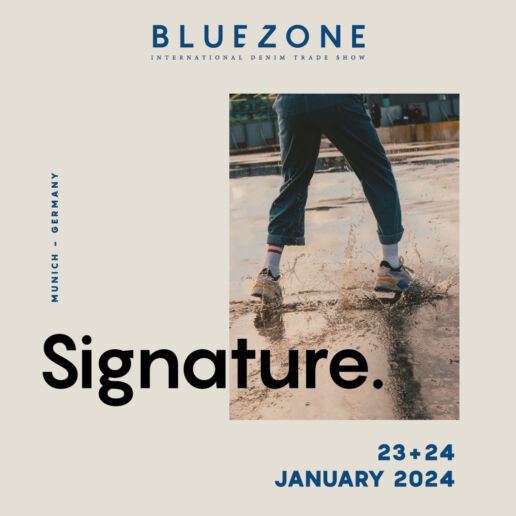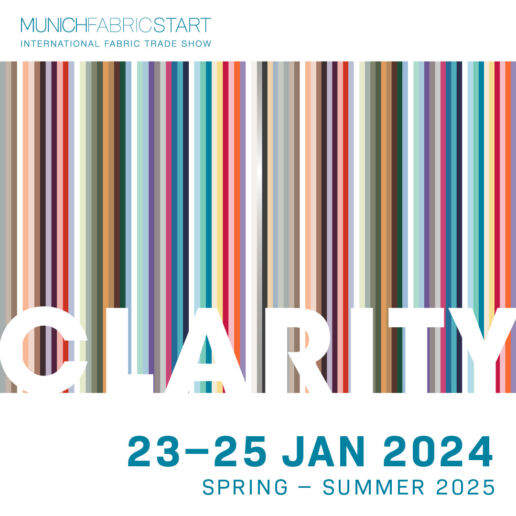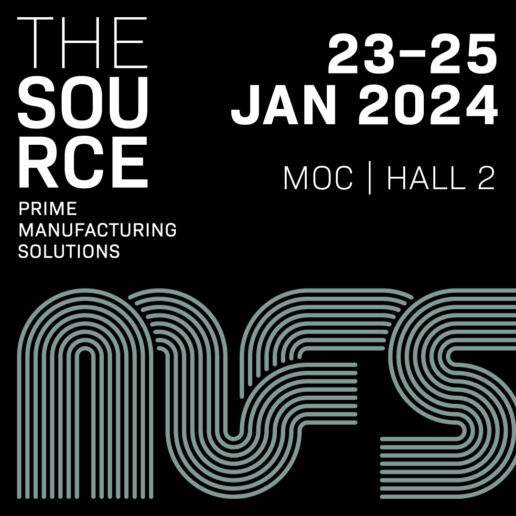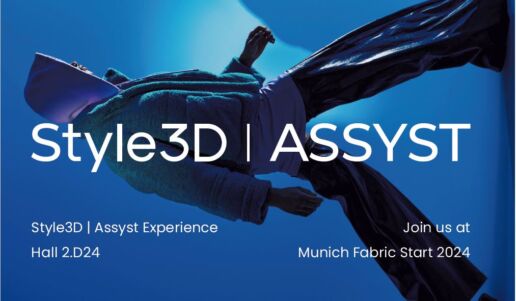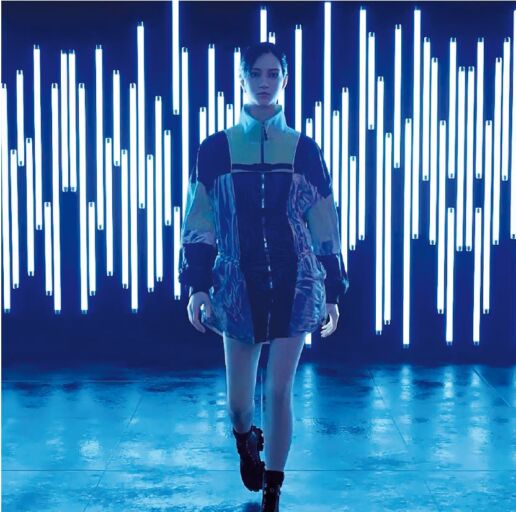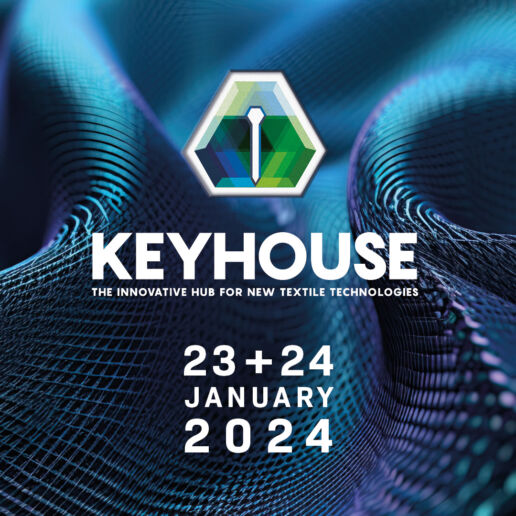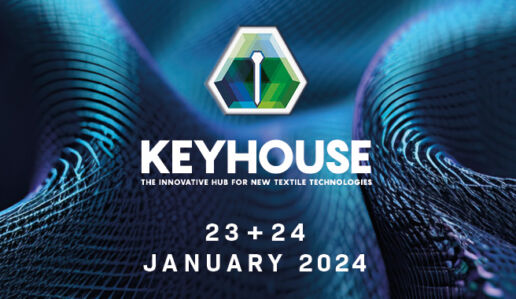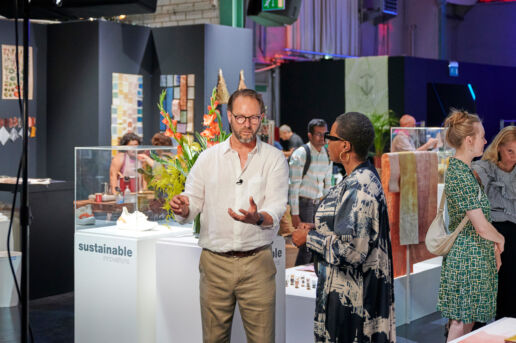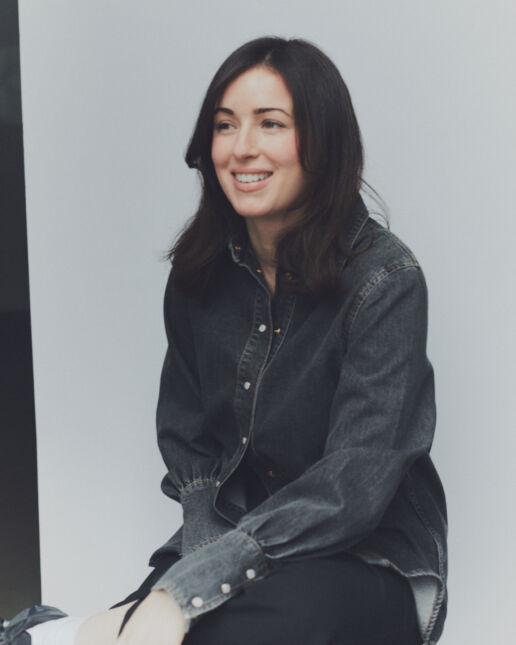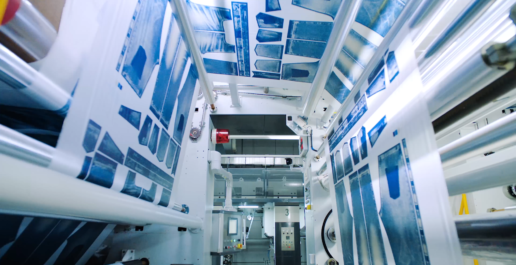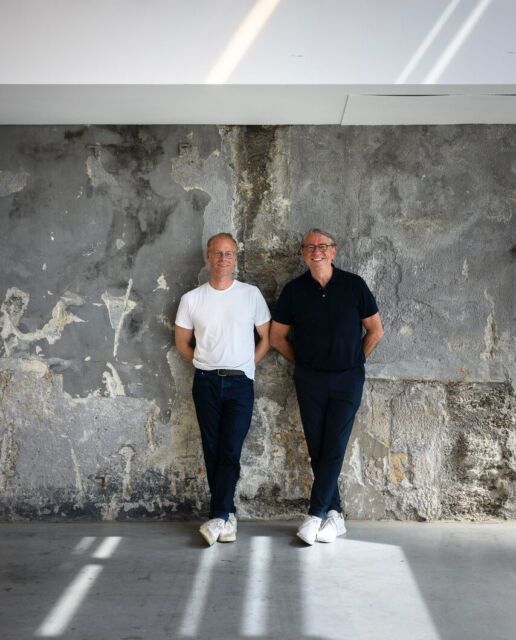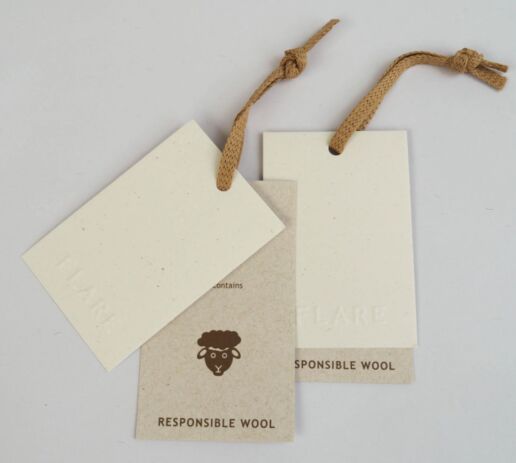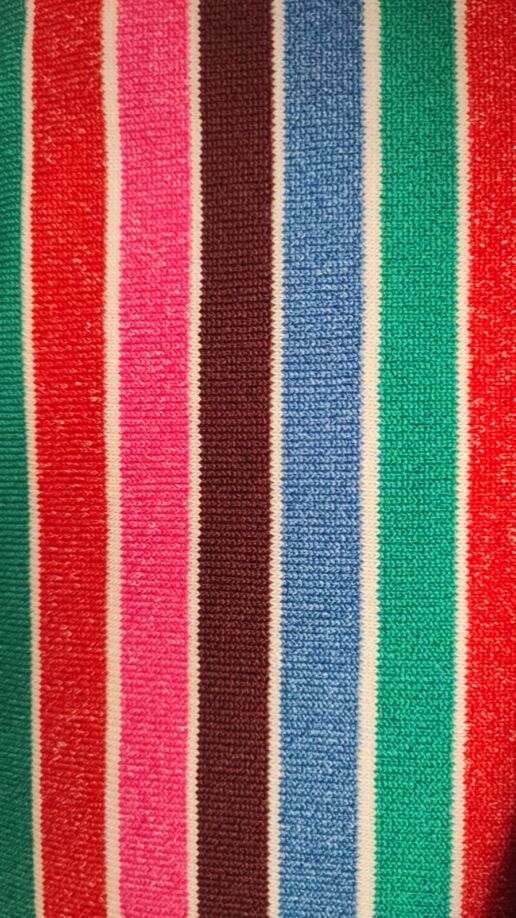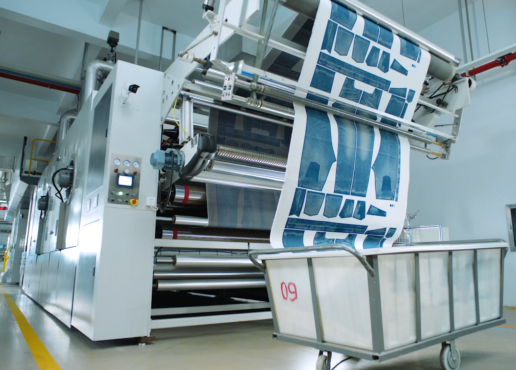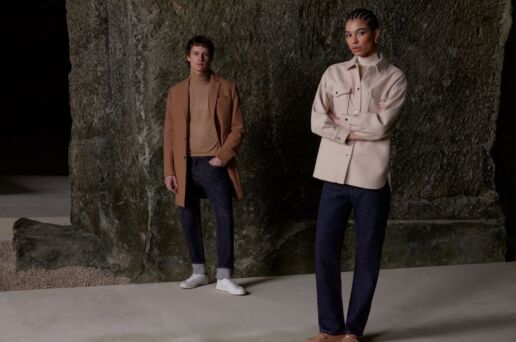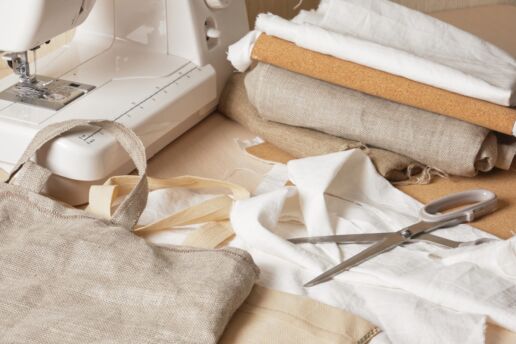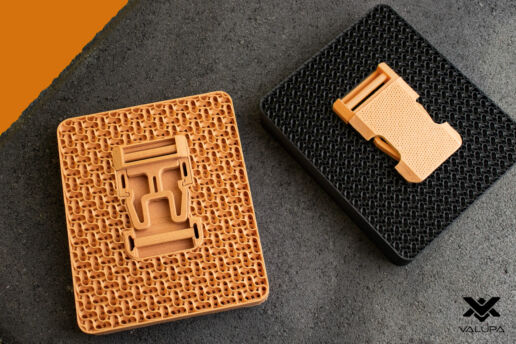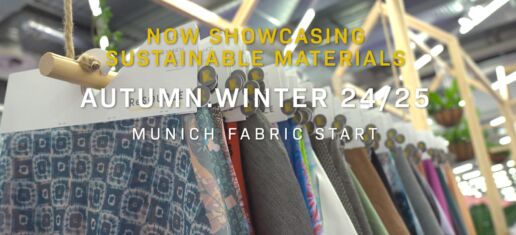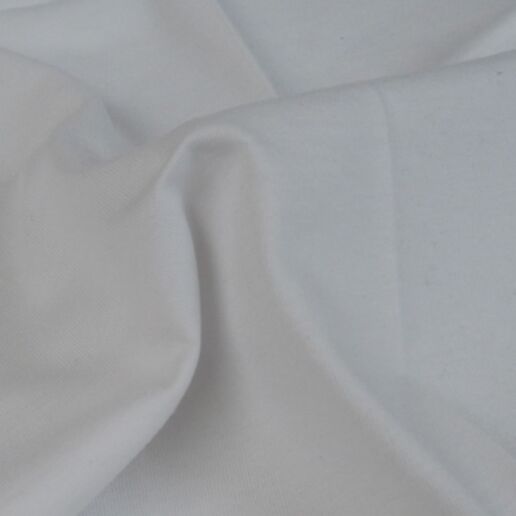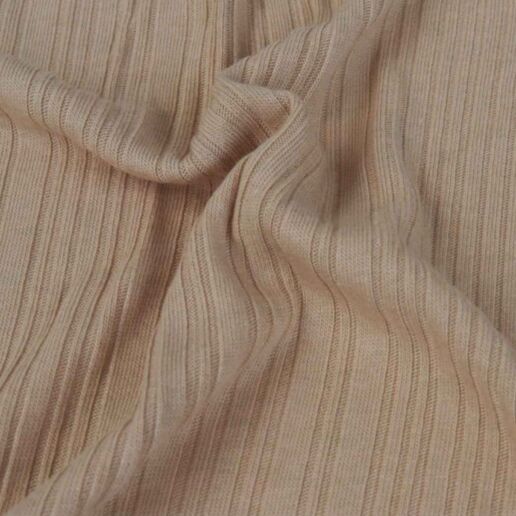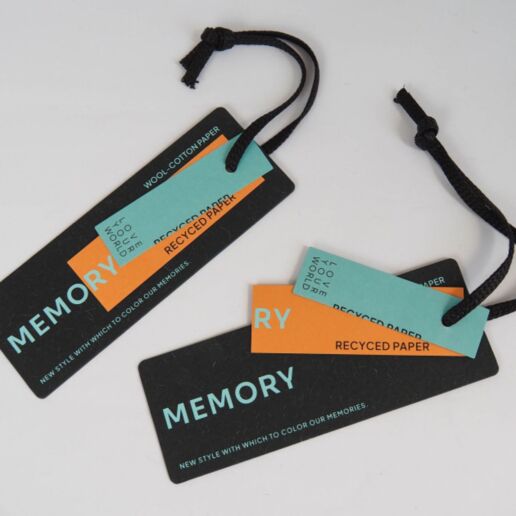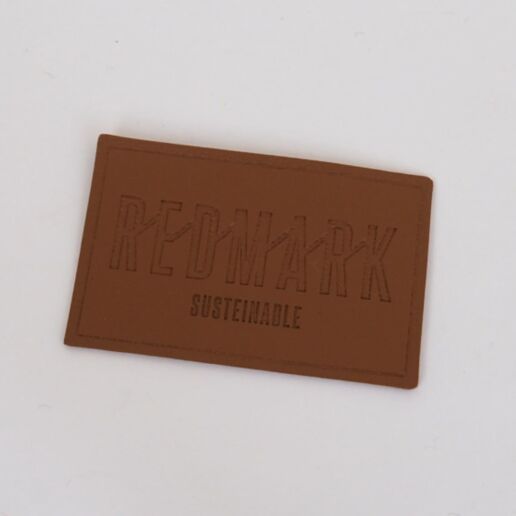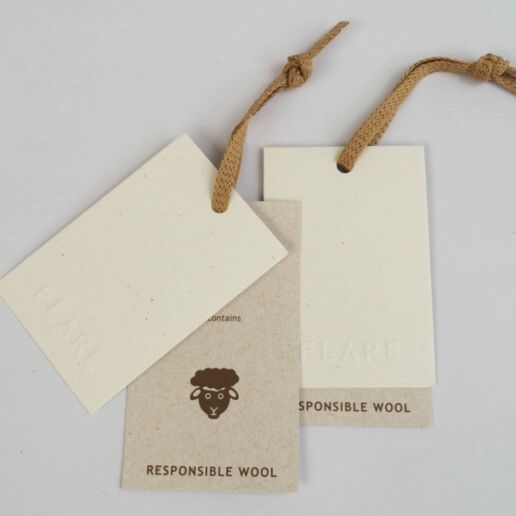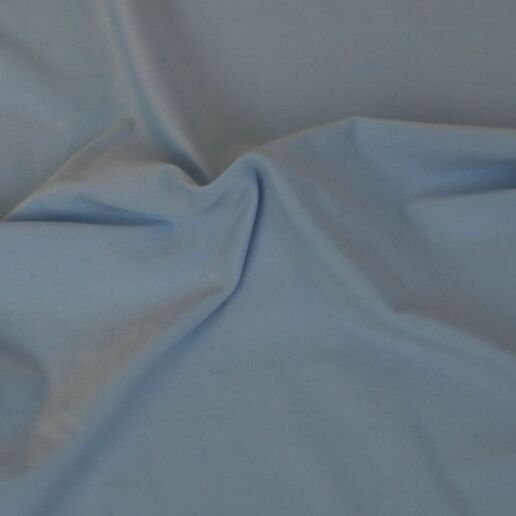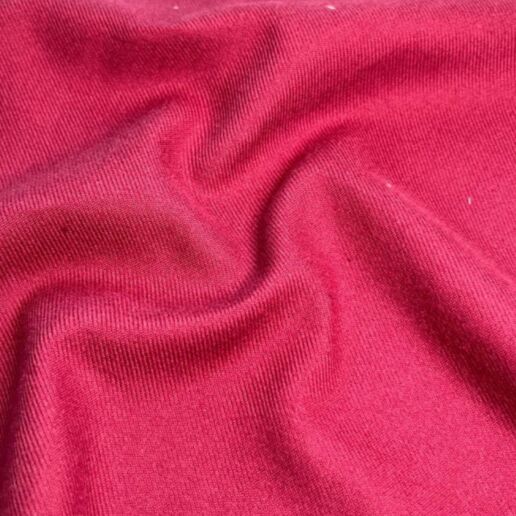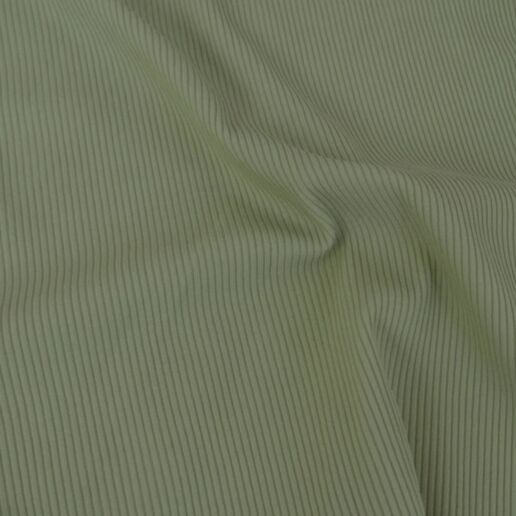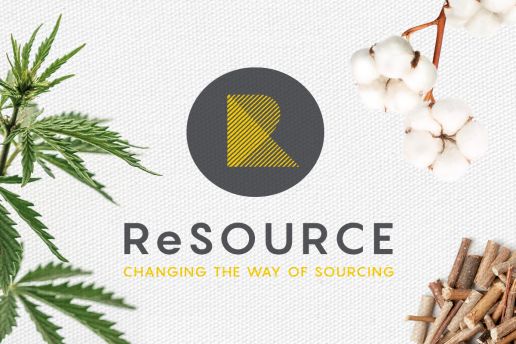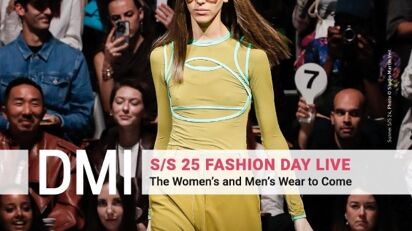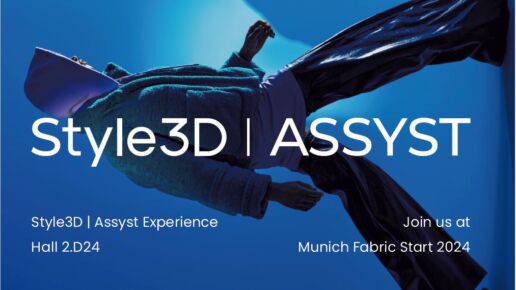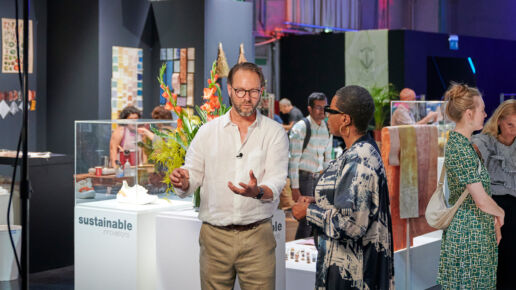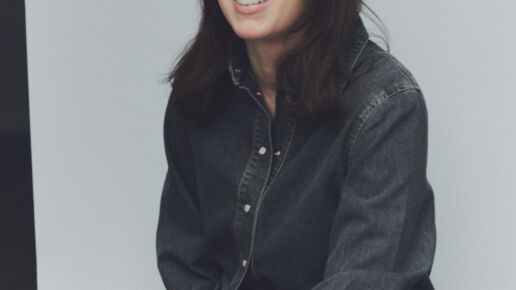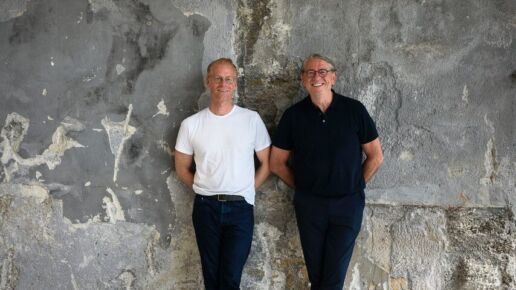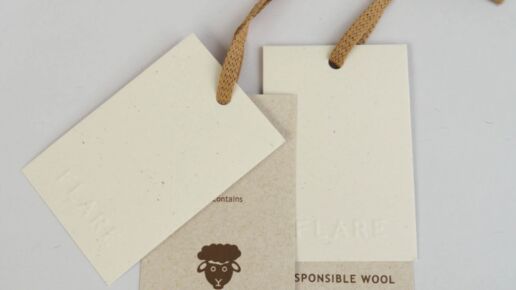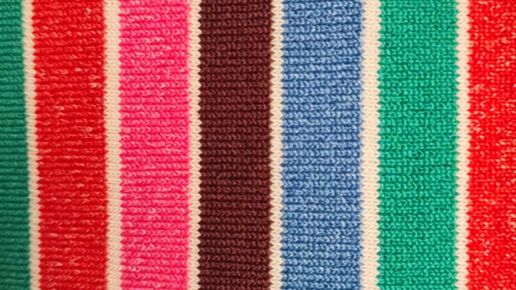Munich Fabric Start
TIMELY TIMELESS
The new minimalism is more than a “palate cleanser” that is intended to give our senses a brief opportunity to recover before the next wave of opulent taste experiences hits them again. It’s sure to linger simply because it is linked to our worldview. In contrast to previous generations, for us “simple” no longer just means “simple and poignant”, but also “sustainable because timeless”.
Two seasons ago, the DMI FASHION DAY at MUNICH FABRIC START was about the question “Should we slow down or speed up?”. We had prepared you for the fact that the desire to slow down fashion would soon reach the mainstream. A recent survey confirms that fashion trends that change too quickly are viewed increasingly critically: three quarters of all women are of the opinion that there are too many and too extreme trends. 65% believe trends are becoming less and less important. And almost 94% pride themselves on saying that they buy regardless of trends.
Longevity is currently very popular. And that doesn’t just mean more solid quality, but also and above all a more timeless design. Fashion is responding to this growing demand for timeless design with increasingly understated design. In this respect, the new minimalism continues the by now century-old tradition of “less is more”, but in a completely new zeitgeist setting. A lot of what is wrongly labelled “Quiet Luxury” actually doesn’t want to look like old money, but rather just be timeless.
Paradoxically, it is currently trendy not to be trendy. People want clothes that look timeless. But then again, paradoxically, timelessness is not timeless either. So we are faced with the challenge of creating a look that is trend-independent in a trendy way and timeless in a contemporary way.

Carl Tillessen
“The debut last season was the best confirmation of our concept of providing trend information with the DMI FASHION DAY exactly when it is needed, namely at the moment when the course for the next season is set with the selection of fabrics. I’m really looking forward to meeting and exchanging ideas with everyone in Munich.”
Carl Tillessen, CEO DMI
INFORM & INSPIRE YOURSELF AT THE MUNICH FABRIC START AT DMI:
You can find out how you can make this work for you in a personal conversation with the DMI analysts. Feel free to contact us anytime.
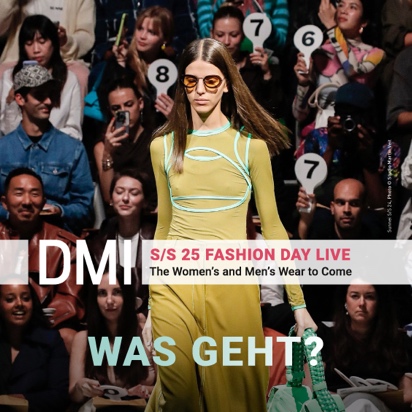
Discover more industry-changing innovations at our upcoming trade fairs:
Digitale Klarheit im Design - ASSYST
Digital processes elevate design to a new level, but only when the result is right and quick. To ensure the flow of ideas and data, Style3D | Assyst passionately develops and confidently explores new paths.
In the 3D simulation, the dress moves as if caught in a breeze. Whether it‘s a skirt or a down coat, the movement looks so realistic that one tends to forget the computer. Everyone in design, technical development, and pattern teams is meant to experience this seamless connection between the digital and the real world. Fabric, human, and pattern are realistically represented, pushing the boundaries of technology. The results are captivating, opening up new possibilities in clothing development and fabric design.
Digital fabrics facilitate collaboration
With both physical and digital fabric versions, manufacturers can provide better guidance. At events or in their own showroom, fabrics are collectively examined. The scanned digital version can be recolored, enlarged, experimented with in designs, and shared with colleagues on-site or later in the company. Once everyone agrees, the fabric is purchased and ideally produced afterward.
3D design and 2D patterns merge
A common scenario: everything looks good digitally until the pattern comes into play. Suddenly, a seam line on the back or inserts on the sleeves are necessary, disrupting the design idea. Numerous approval rounds like these are required in developing a new collection. It‘s much faster when the design interacts directly with the production-ready pattern. The designer doesn‘t need to switch to the CAD system; the pattern stays in the background, automatically updating and reapproving for significant changes.
3D clothing reaches customers
From showroom to eShop or store, it can take weeks … or just days. With the right tools, 3D designs transform into high-quality marketing and sales visualizations. All with the characteristics of the digital product matching the real one, complemented by suitable digital experiences.
Artificial Intelligence begins to create value
When rapid new ideas are needed, inspiration is crucial. AI, like in a brainstorming session, helps generate fresh ideas and refine one‘s concept. Designs can be created quickly, and unsuitable versions can be sorted out promptly. The right design can be replicated and further refined.
Fashion undergoes sustainable change
When design (3D) and production (2D) seamlessly connect, the apparel industry changes significantly. Design, pattern, and technical development can work more easily, sustainably, and cost-effectively, resulting in less fabric and fewer patterns throughout the process. The remarkable aspect is that this revolution requires minimal effort for individuals. Everyone can continue working in their familiar systems, and the integration of systems leads to a closer collaboration with clear results. Each digital design matches the real product, providing extra clarity that is particularly valuable for design teams, thanks to the benefits of digitization.
WE LOOK FORWARD TO WELCOMING YOU IN
→ HALL 2 | D 24 or digitally at www.assyst.de
PROGRAM:
AI for inspiration and promotion
Digital Knitwear Design with KM.On
3D/2D.Connect – Design with product-ready pattern
Digital Fabric for brands and manufacturers
Collaboration – on site, remote or worldwide
OUR PRESENTATIONS IN THE KEYHOUSE:
Design from idea to shelf – the new possibilities for designers
with AI and 3D/2D.Connect from Style3D | Assyst
Global design & production – 3D/2D CAD in the supply chain
[Best Practice]
Discover more industry-changing innovations at our upcoming trade fairs:
ORTA x Long John
ORTA x Long John Presents: The biggest sustainable jeans!
The well-known Turkish denim manufacturer ORTA, celebrated its 70th anniversary last year teams up with Wouter Munnichs, founder of online denim magazine Long John and freelance denim specialist for brands and retail, to create the biggest sustainable pair of blue jeans ever made. This huge collaboration jeans will be on display at denim fabric trade show Bluezone in Munich, Germany on the 23rd and 24th of January, 2024.
This January, ORTA and Long John will join forces in a very special jeans collaboration. Together they developed the biggest sustainable jeans ever produced to set a new milestone within the denim industry. This display jeans is made with a waist size 133 and a total length of around 4,5 meters. For the inspiration of this collaboration jeans, they looked at the past when huge display jeans were made as a promotion for a denim brand. These originals were used to showcase a jeans brand in a unique and unmissable way in front of retailers and at rodeo events in the West of America from the 1920’s onwards.
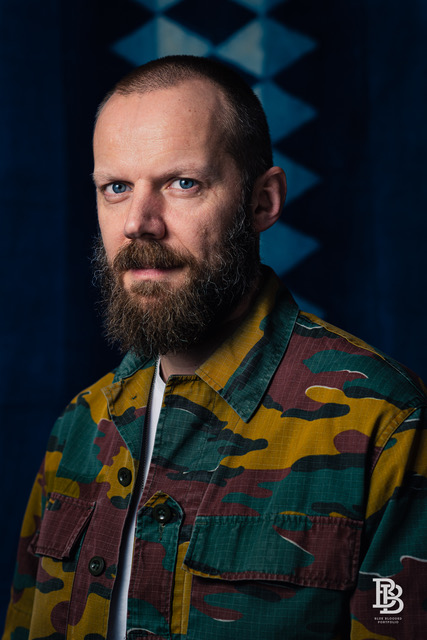
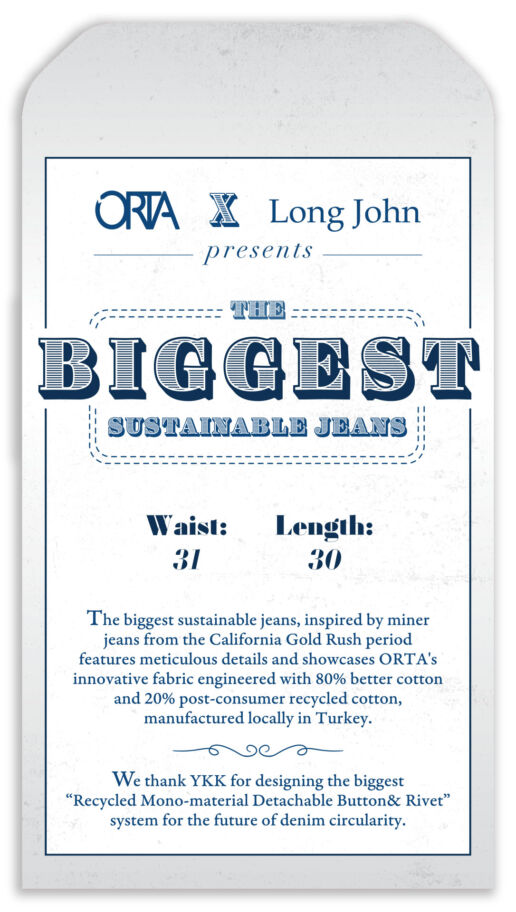
Showcasing the new sustainable denim fabric
The idea of making something that stands out came when ORTA developed a new sustainable denim fabric with code 4853A, colored Steel Blue. This rigid 2/1 Z twill denim fabric weighs 10.6 oz and is made with a composition of 80% better cotton + 20% post-consumer recycled cotton. The fibers as well as the fabric were all manufactured in Turkey locally. As a long partner of ORTA, Long John sat down with the ORTA to think about a way they could present this innovative denim fabric that can’t be missed by each visitor of the Bluezone trade show in Munich. Soon, they were thinking of creating this enormous pair of jeans.
The inspiration for the display jeans
The design of the ORTA x Long John display jeans is inspired on the original miner jeans that were worn during the kick-off of the so-called ‘Gold Rush’ period around 1850 in California, USA. During this period, many people from all over the world came to California when gold was discovered in the mines. To get the job done, a sturdy and durable pair of blue jeans was needed. This is seen by many as the kick-off of the history of denim. The rest is history.
The ORTA x Long John display jeans is produced with an eye for detail, just like the originals. Key detail features on this pair are included such as one back pocket, a cinch back, suspender buttons on the waistband, and even a crotch rivet on the front. Also, for this display pair, a huge hangtag is produced, the same as a back patch from sustainable cotton fabric showing both ORTA and Long John logos.
Displayed at Bluezone
The biggest sustainable jeans ever produced by ORTA x Long John will be showcased for the very first time at the denim fabric trade show Bluezone in Munich on the 23rd and 24th of January. Don’t miss this chance to get yourself photographed in front of this big 133-sized pair of blue jeans.
This might be also interesting for you:
KEYHOUSE 2024 trends spring.summer25
20. January 2024
Auf über 1.000 Quadrat-metern finden Sie richtungsweisende Smart Textiles, Future Fabrics und neue Technologien – sei es in Punkto Nachhaltigkeit, Kreislaufwirtschaft, Digitalisierung, Traceability, Technologie oder Finishing für die Saison Autumn.Winter 24/25.
TIMELY TIMELESS
18. January 2024
Langlebigkeit steht hoch im Kurs. Und damit ist nicht nur eine solidere Qualität gemeint, sondern auch und vor allem ein zeitloseres Design.
Digitale Klarheit im Design – ASSYST
16. January 2024
Für das Thema Nachhaltigkeit sind normalerweise Einkauf und Produktion zuständig. Wer aber über den Einsatz von abbaubaren Stoffen hinausdenkt, kann Kosten, Materialverbrauch und Profitabilität deutlich beeinflussen. Neu daran: Der Schlüssel dazu liegt in der Hand der Kreativen.
ORTA x Long John
13. January 2024
Togetherthey developed the biggest sustainable jeans everproduced to set a new milestone within the denim industry.
GANNI – Fashion made from next-gen materials
9. January 2024
With all our communication we try to speak to our community in a meaningful and honest, not perfect way, showing the hard stuff, the stuff we didn’t get right, as much as we show the stuff we nailed.
STELLA BLU PRESENTS ITS FIRST COOLTRANS DENIM COLLECTION MADE WITHOUT INDIGO
4. January 2024
This technology opens up extremely exciting possibilities.
CLARITY In conversation with the organisers of MUNICH FABRIC START about the industry, the trade show calendar and new dates
2. January 2024
CLARITY » the pursuit of structure and unambiguousness on both a large and small scale «
ReSOURCE – Autumn.Winter 24/25
24. October 2023
Certifications, recycled materials, environmentally friendly - that's what the sustainable fabrics from the ReSource range stand for.
The Fabric Trends Autumn.Winter 24/25 – Part VIII
19. October 2023
The combination of plum and matcha is futuristic and calming. Apricot Crush gives hope and awakens positivity, rounded off with a hint of intensely rusty autumn dust.
Diversity in Dynamics
Marvelling at the levels of sophistication and innovation modern fabrics have attained and continue to breach, it is easy to forget that our relationship with textiles is one of the most intimate and primal ones we have. Granted, today’s creations are (thankfully) far removed from the scratchy cloth our ancestors wore huddled around the fire.
But over the course of time, our relationship with textiles has changed. While we have – technically and commercially – never been closer to textiles, ambitiously engineering fabric compositions to cater to an increased demand of sustainability, for instance, we are ironically also stepping further away emotionally from what was once – literally – closest to us. Today, our engagement with textiles is largely dependent on the prism through which we choose to experience and value it:
We have increasingly come to approach textiles as objects of research and science, questioning what characteristics new fabrics ought to have and how existing textiles can be improved to comply with the ever-changing demands of the market. Impressive examples of such science-led approaches are two projects within the BIOTEXFUTURE-cluster, led by the Institute for Textile Technology (ITA) and the Chair for Technology and Organizational Sociology (STO) at RWTH Aachen together with their industry partner adidas. Within BIOTEXFUTURE, they investigate the transition of the textile value chain to bio-based materials, including alternatives to conventional elastane (CO₂Tex), or the establishment of bio-based polymers in the industry (BIOBASE).
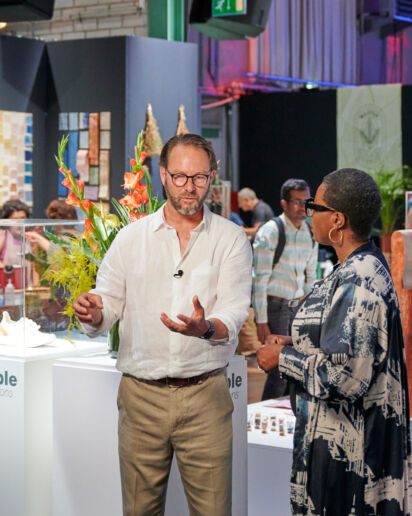
Of course, textiles also lend themselves to in-depth material exploration, analysing intricacies of production and means of (p)rethinking and challenging standards. Think of leather and its unique characteristics – who would have thought something strikingly similar could be crafted from a hemp plant, as illustrated by Lucas Fuhrmann’s “Revoltech”? Or going so far as to almost brutally decontextualize a biomaterial like feathers from their original purpose of insulation, submitting it completely to the functionality of aesthetics, as Suzanne Corcessin has done with “Being Plucked”.

Simon Angel
And still, textiles can be a means of social connection – looking at the emotional component of fabrics, their functionality and the effects they have on others in public and private interaction, reconstructing relationships and the marriage between human and textile. Beautiful testaments of such exploration are the works of Paul Schaffer, whose collection of woven fabrics aims to foster appreciation for the interconnectedness of organisms, Sophie Conroy, who investigates the metaphysical significance of textiles as a connection between the body and the environment, and Elizabeth Balado’s “Blooming Minds: Social Printing”.
Are we leading or following completely different dynamics? Are we at risk of sacrificing artistic intimacy for scientific progress? Are we winning or losing touch? It’s not about being right or wrong, but a question of prism. The Sustainable Innovations Forum proves that it is possible to navigate these different dynamics. Take Cloudwool, for example: with a diverse portfolio and numerous opportunities to work with their product, they have attracted the attention of the likes of Grenson and Balenciaga, effectively demonstrating that it IS possible to unite the different dimensions of soul and science, while successfully positioning their product at the same time.
Feel the difference in dynamics for yourself – come and meet us in the KEYHOUSE and experience the Sustainable Innovations Forum.
Best wishes,
Simon
INFORM & INSPIRE YOURSELF AT THE MUNICH FABRIC START
IN THE SUSTAINABLE INNOVATIONS AREA IN THE KEYHOUSE – H5!
Discover more industry-changing innovations at our upcoming trade fairs:
GANNI – Fashion made from next-gen materials
Munique magazine contributor Muchaneta ten Napel, recently had the opportunity to sit down with Lauren Bartley, the Chief Sustainability Officer at GANNI to dive into the brand’s sustainable initiatives and vision for the future of fashion.
Muchaneta ten Napel (MTN): “Lauren, can you share with us GANNI’s journey towards sustainability and how it’s integrated into your brand’s ethos and fashion design?”
Lauren Bartley (LB): “Absolutely, Muchaneta. It starts with our founders Ditte and Nicolaj, who are personally passionate about the topic of sustainability and hacking the fashion system – it’s at the core of everything we do at GANNI and has been key to our progress in the area. In 2019, we created our first sustainability strategy the GANNI Game-plan comprised of 44+ goals to reach by 2023 surrounding People, Planet, Product and Prosperity. In 2022, we completed our first strategy and became a B Corp Certified company and now we are well in to our second strategy Game-plan 2.0, running until 2025 – which creates further impact to our business model and operations.”
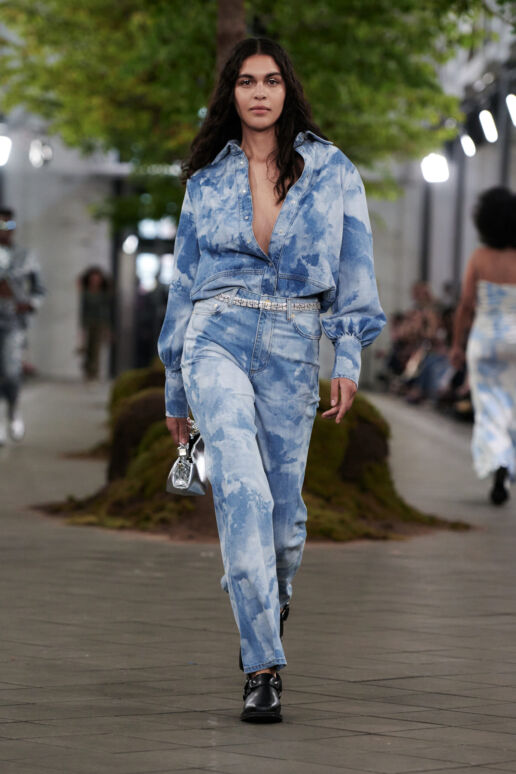
Future Denim Shirt med in Circulose® by Renewcell – a natural material made via textile waste, and Circulose®, which transforms textile waste into a new material without the need for cotton fields, oil, or trees
Our GANNI Bou bag in Ohoskin, made from orange and catus 100% Ohoskin (48% plant-based content, 52% Recycled Plastics)
Photo by Mathias Nordgreen
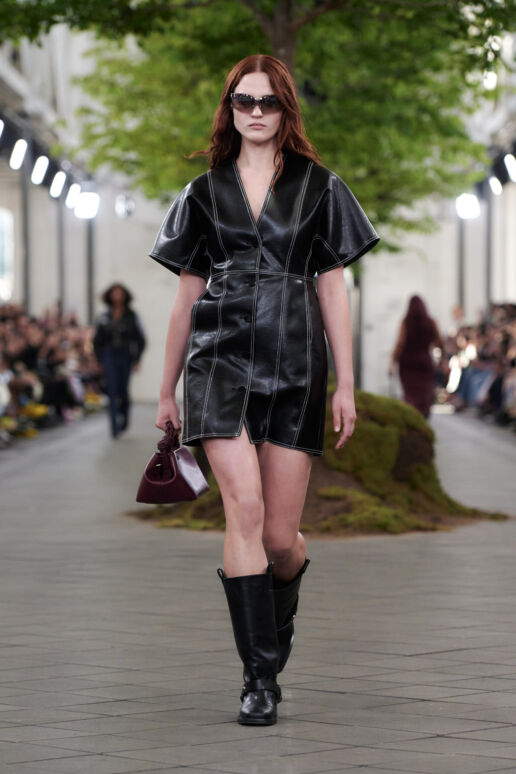
Dress in Oleatex – a plant-based olive leather alternative made from waste streams from olive oil production.
Our GANNI Bou bag in Ohoskin, made from orange and catus 100% Ohoskin (48% plant-based content, 52% Recycled Plastics)
Photo by Mathias Nordgreen
M.T.N.: “What are the unique challenges and opportunities you’ve encountered in incorporating next-generation materials into GANNI’s collections?”
L.B.: “The opportunity is to re-think fashion as we know it and empower our designers to do what they do best – get creative – and create something beautiful. We’re committed to working with fabric innovation as it’s the only way we will reach our ambitious carbon reduction goals – a 50% absolute carbon reduction by 2027. By 2025, 10% of our collections will be made from Fabrics of the Future. There are obviously challenges too, especially around scalability and the commerciality of the materials and that’s why it’s so important for us to invest and encourage other brands to invest too, because we all desperately need the solutions the innovators are offering. Commercial viability, but it’s essential to invest in these innovations.”
M.T.N.: “How has GANNI’s experience been in piloting new textiles on a smaller scale, and what impact has community feedback had on these initiatives?”
L.B.: “We will always introduce a new fabric innovation through a pilot project, to test and learn and get feedback from our community. So far, the response has been extremely positive. For us it’s about seeing these next-gen materials as something new and not comparing it to existing materials and fabrications.”
M.T.N.: “Navigating the costs and investments in sustainable materials is crucial. Can you discuss GANNI’s approach?”
L.B.: “Its early days, for now we have piloted around 10 material innovations, but the challenge is really to scale them to a commercially viable status. The pilots are an investment for GANNI, with no clear return on investment, that is not a sustainable model for any company and that is why we need these innovators to succeed and for GANNI to do whatever we can to help make it possible. We will have Renewcell’s Circulose in our main collections in 2024 and scaled and it’s exciting to see how that resonates with our community.”
M.T.N.: “Could you share insights into GANNI’s strategies for circular fashion and waste management?”
L.B.: “As part of our Game-plan 2.0 and commitment to Circularity, we have a goal of 5% of revenue coming from circular business models by 2025 from a 2021 baseline. With our Circular Business Models we look at new business models that have potential to reimagine the fashion industry as we know it. Currently, we are revising the Circularity strategy and will be sharing more on our goals within the pillars ‘Designed for Circularity’, ‘Recycling’ and ‘Circular Business Models’ in early 2024.”
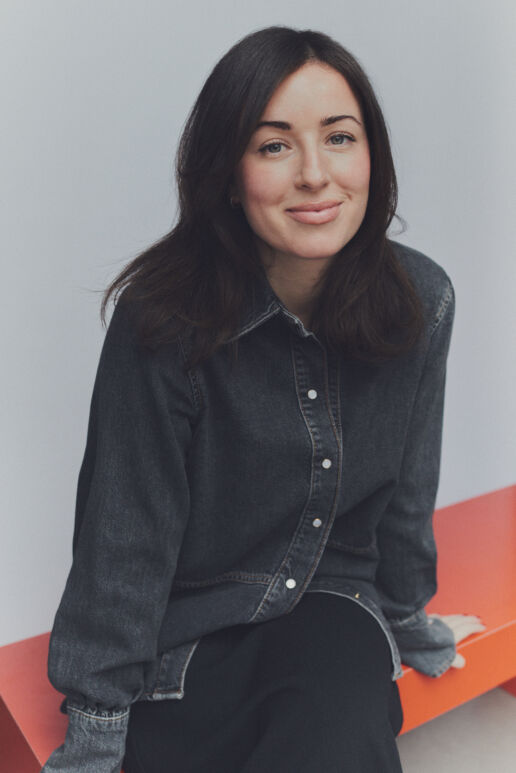
M.T.N.: “How does GANNI approach consumer education regarding sustainable fashion?”
L.B.: “Our biggest communication channel on Responsibility is our instagram account @GANNI.Lab where 100% of the feed is dedicated to our journey in becoming the most responsible version of ourselves. This is very much about what GANNI needs to do and where we are on our journey and does not put the onus on the end consumer. With all our communication we try to speak to our community in a meaningful and honest, not perfect way, showing the hard stuff, the stuff we didn’t get right, as much as we show the stuff we nailed.”
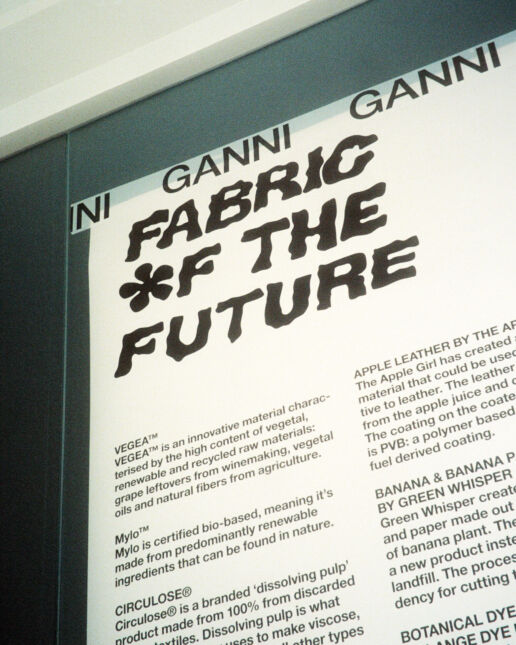
M.T.N.: “In the context of forming partnerships, what insights can you share about GANNI’s collaborations?”
L.B.: “We believe in the power of industry collaboration, no brand will succeed in a sustainable transition alone. GANNI works with over 30 material innovators and 13 partners and software solutions to help us progress on environmental sustainability, social sustainability and traceability. We would not be where we are without our partners.”
M.T.N.: “As the Chief Sustainability Officer, what is your vision for the future of sustainable fashion?”
L.B.: “For me, the onus is on the brands to offer more sustainable solutions to its customers – whether that be more responsible fabrics, transparent supply chains, workers paid a living wage and the adoption of new business models such as resale. We cannot force people into sustainable fashion, but by making it convenient, accessible and raising the education and awareness of some of the challenges and ultimately solutions in the industry, we can encourage more responsible consumption and behaviour. It’s a brave endeavour for a brand to recognise their own shortcomings, but being transparent, being honest and not perfect solidifies the value and integrity of the company- which ultimately, we can all appreciate as consumers”.
Are you interested in more in-depth facts and figures on the new textile industry?
Visit the Shape Innovate Lounge in H5 | 04 or take part in the mini-lectures in the Keyhouse.
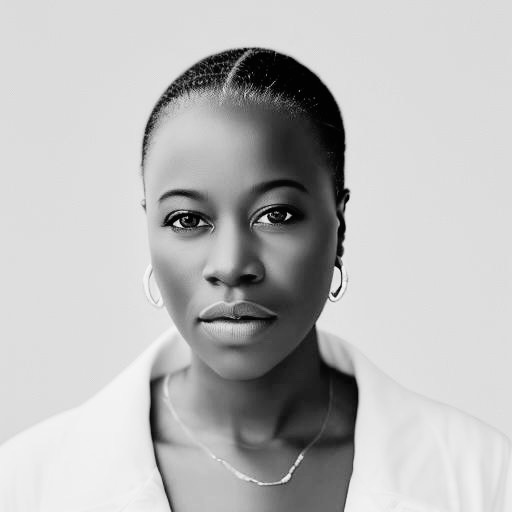
About the author
Muchaneta Ten Napel is the founder of Shape Innovate, a company that critically examines the economic impact of the fashion industry and publishes comprehensive, data-driven research, white papers and forecasts that shed light on the fiscal dynamics of both fast fashion and sustainable fashion practices.
In addition to running Shape Innovate, Muchaneta is the driving force behind FashNerd.com, her own digital platform dedicated to the latest tech developments in the fashion industry. As well as writing for her platform, she has also contributed to Vogue Business and is currently a senior contributor at The Interline.
Muchaneta is a lecturer at London College of Fashion (UAL), has taught at Conde Nast College of Fashion and UCL and has held a workshop at Zurich University of the Arts to share her extensive knowledge.
With extensive industry experience, Muchaneta is also a fashion innovation consultant and has authored in-depth research for companies such as LVMH Atelier.Muchaneta, who was actively involved with the UNFCC and Climate KIC during COP27, is now Chair of the Cultural and Creative Industries (CCI) Taskforce for the UN Climate Change Global Innovation Hub.
To further expand her influence, Muchaneta hosted the Innovation Stage at the Global Fashion Summit in Copenhagen and is a board member of the Fashion Innovation Center, where she contributes her strategic insights to further revolutionise the industry.
Muchaneta ten Napel | m@shapeinnovate.com
This might be also interesting for you:
KEYHOUSE 2024 trends spring.summer25
20. January 2024
Auf über 1.000 Quadrat-metern finden Sie richtungsweisende Smart Textiles, Future Fabrics und neue Technologien – sei es in Punkto Nachhaltigkeit, Kreislaufwirtschaft, Digitalisierung, Traceability, Technologie oder Finishing für die Saison Autumn.Winter 24/25.
TIMELY TIMELESS
18. January 2024
Langlebigkeit steht hoch im Kurs. Und damit ist nicht nur eine solidere Qualität gemeint, sondern auch und vor allem ein zeitloseres Design.
Digitale Klarheit im Design – ASSYST
16. January 2024
Für das Thema Nachhaltigkeit sind normalerweise Einkauf und Produktion zuständig. Wer aber über den Einsatz von abbaubaren Stoffen hinausdenkt, kann Kosten, Materialverbrauch und Profitabilität deutlich beeinflussen. Neu daran: Der Schlüssel dazu liegt in der Hand der Kreativen.
ORTA x Long John
13. January 2024
Togetherthey developed the biggest sustainable jeans everproduced to set a new milestone within the denim industry.
GANNI – Fashion made from next-gen materials
9. January 2024
With all our communication we try to speak to our community in a meaningful and honest, not perfect way, showing the hard stuff, the stuff we didn’t get right, as much as we show the stuff we nailed.
STELLA BLU PRESENTS ITS FIRST COOLTRANS DENIM COLLECTION MADE WITHOUT INDIGO
4. January 2024
This technology opens up extremely exciting possibilities.
CLARITY In conversation with the organisers of MUNICH FABRIC START about the industry, the trade show calendar and new dates
2. January 2024
CLARITY » the pursuit of structure and unambiguousness on both a large and small scale «
ReSOURCE – Autumn.Winter 24/25
24. October 2023
Certifications, recycled materials, environmentally friendly - that's what the sustainable fabrics from the ReSource range stand for.
The Fabric Trends Autumn.Winter 24/25 – Part VIII
19. October 2023
The combination of plum and matcha is futuristic and calming. Apricot Crush gives hope and awakens positivity, rounded off with a hint of intensely rusty autumn dust.
STELLA BLU PRESENTS ITS FIRST COOLTRANS DENIM COLLECTION MADE WITHOUT INDIGO
Stella Blu is very proud to announce to be the first Denim mill in the world to adopt the use of NTX Cooltrans – the revolutionary waterless coloration technology into its production of denim & colored denim fabrics.
The coloration process happens with extreme precision and consistency every time and is applicable to almost any fabrics, natural, cellulose-based or synthetics man-made without the need for heat and over 90% reduction in water usage without compromising the fabric’s engineered feel or functional performance.
Conventional denim has an extensive use of water, heat and chemicals starting from the initial processes of fabric making – dyeing yarns into several indigo baths – all the way down to laundry processes to create that vintage distressed look.
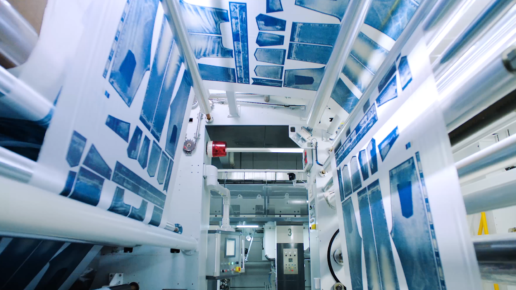
“With Cooltrans, we are able to completely eliminate these two processes.”, says Marco Stefanelli, director of marketing & business development at Stella Blu. “We start from a white PFD fabric and then the coloration process happens without heat at both sides simultaneously in only one single pass—the front face gets the printed washed look and the back side face gets printed with the twill line or any other pattern the client’s desire.”
This technology opens up extremely exciting possibilities. For instance, clients could have a single quality greige and print nearly infinite combination of aesthetics. By doing so, they can drastically improve the speed to market with much lower SKUs.
Many denim brands today maintain extensive material libraries, consisting of well over 500 different types of fabric, solely for the purpose of achieving a desired look. However, with Cooltrans, the aesthetic can be completely independent of the fabric composition. By calibrating the process to a specific fabric base, brands can achieve a wide range of aesthetics on a single twill type, resulting in tremendous costs savings.
Furthermore, addressing the environmental impact of indigo dye is a shared concern within the industry. Cooltrans is seen as a promising solution to reduce the toxicity associated with indigo dye as there is no indigo involved in the entire process, which is an additional key point that many brand houses view it favourably.
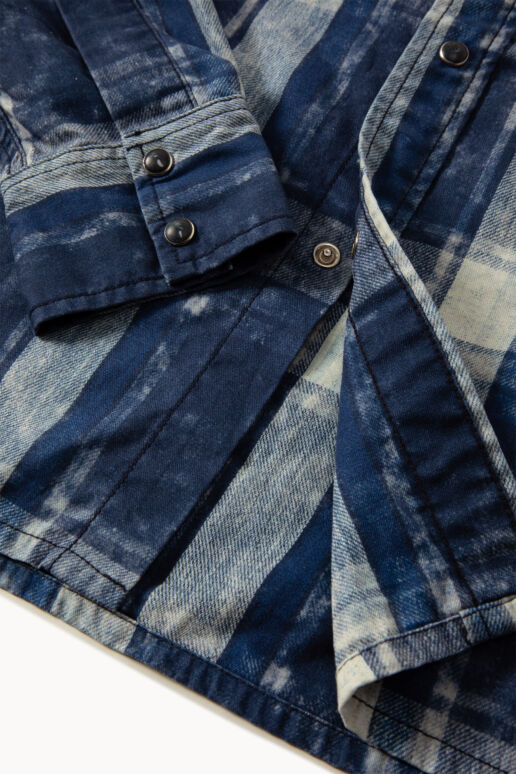
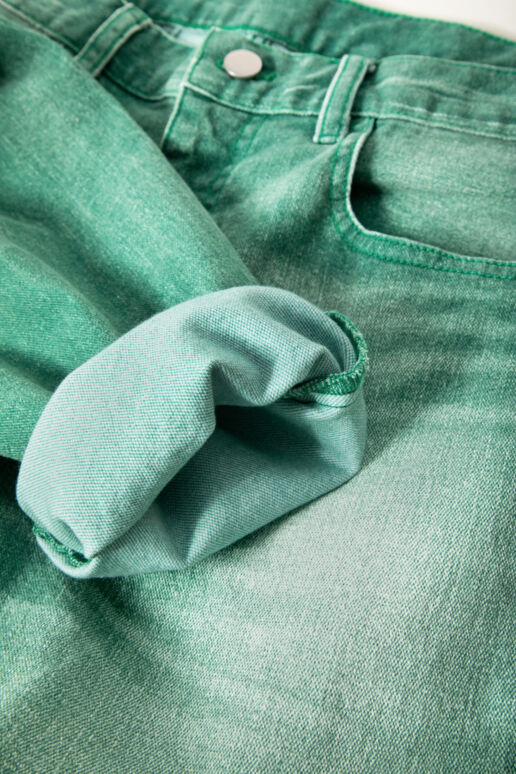
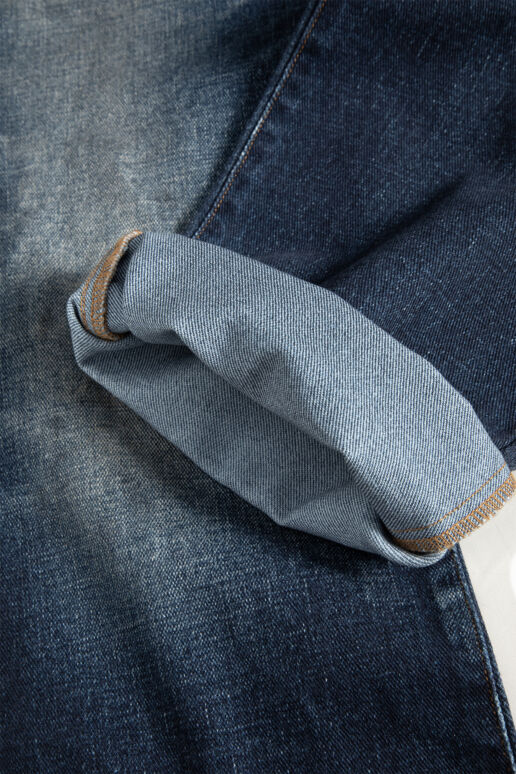
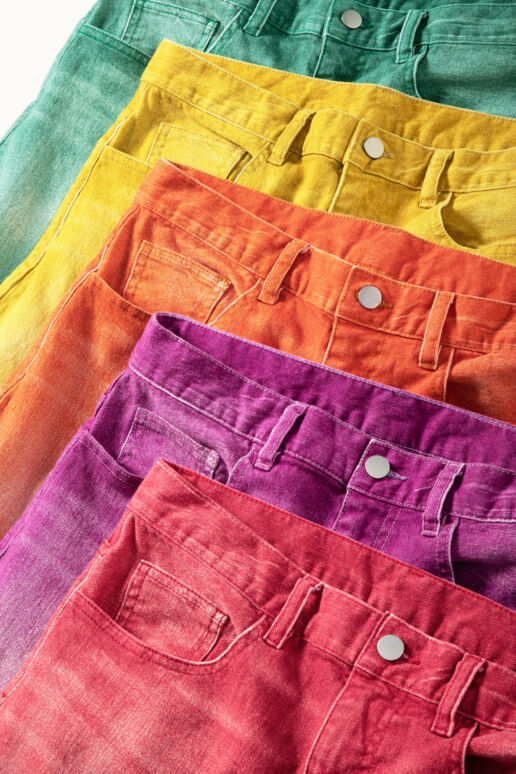
Meet the Stella Blu Team at Bluezone in Hall 7 | B 16.
This might be also interessting for you:
ORTA x Long John
13. January 2024
Togetherthey developed the biggest sustainable jeans everproduced to set a new milestone within the denim industry.
GANNI – Fashion made from next-gen materials
9. January 2024
With all our communication we try to speak to our community in a meaningful and honest, not perfect way, showing the hard stuff, the stuff we didn’t get right, as much as we show the stuff we nailed.
STELLA BLU PRESENTS ITS FIRST COOLTRANS DENIM COLLECTION MADE WITHOUT INDIGO
4. January 2024
This technology opens up extremely exciting possibilities.
CLARITY In conversation with the organisers of MUNICH FABRIC START about the industry, the trade show calendar and new dates
2. January 2024
CLARITY » the pursuit of structure and unambiguousness on both a large and small scale «
ReSOURCE – Autumn.Winter 24/25
24. October 2023
Certifications, recycled materials, environmentally friendly - that's what the sustainable fabrics from the ReSource range stand for.
The Fabric Trends Autumn.Winter 24/25 – Part VIII
19. October 2023
The combination of plum and matcha is futuristic and calming. Apricot Crush gives hope and awakens positivity, rounded off with a hint of intensely rusty autumn dust.
BLUEZONE CONEXXION Autumn.Winter 24/25 – Part IV
17. October 2023
Blacklight steht für dunkle Indigofarben, Schwarz, Overdyes und beschichtete Stoffe. Ihre Overdye-Technik verleiht dem Stoff eine Reihe von Farben auf beiden Seiten für zusätzliche Vielseitigkeit.
The Fabric Trends Autumn.Winter 24/25 – Part VII
12. October 2023
New Capsule Collection: luxury knitwear for timeless pieces. In a time of increasing resource scarcity, Target is responding to consumers' desire to invest in long-lasting and timeless pieces.
The latest accessory developments for Autumn.Winter 24/25 – Part IV
10. October 2023
valupa develops sustainable and circular supplies such as buckles, buttons, rings and other accessories locally from 100% renewable raw materials. In January 2023, the startup registered its first patent for a new type of modular buckle system.
CLARITY In conversation with the organisers of MUNICH FABRIC START about the industry, the trade show calendar and new dates
New year, new beginnings – what’s new at MUNICH FABRIC START in 2024?
Sebastian Klinder: In 2024, MUNICH FABRIC START will continue to serve as a central European anchor point for the fashion industry, combining creativity and business. When it comes to scheduling and organising our events, we want to meet the needs of as many exhibitors and visitors as possible, while also taking into account differing rhythms of the industry. For this reason, we have decided to shorten the date in September 2024 to two days in line with the current market requirements – with streamlined schedules at familiar venues. With this scheduling, our shows remain the relevant sourcing platforms that can meet the permanently and rapidly changing needs of the fashion industry against a background of efficient time and budget management. MUNICH FABRIC START, BLUEZONE as an international trade show for denim, streetwear and sportswear, KEYHOUSE as an innovation hub and THE SOURCE, where products and services relating to the latest sourcing services and apparel manufacturing take centre stage, will therefore take place on 3 and 4 September.
Frank Junker: Of course, a lot will remain the same this year – in the best possible sense. We are looking forward to many long-standing exhibitors as well as new faces who will present their latest developments at MUNICH FABRIC START. With MUNICH FABRIC START, THE SOURCE, BLUEZONE and KEYHOUSE, we are creating a framework that reflects the industry as well as the latest trends and innovations in all their facets. And the line-up of our carefully curated seminar program includes numerous highlights that should not be missed.
» CLARITY is about the pursuit of structure and unambiguousness on both a large and small scale «
„Clarity“ is the title of the new summer season. What’s behind it?
Sebastian Klinder: “Clarity” describes the pursuit of structure and unambiguousness on both, a large and small scale. Both are increasingly rare in the context of the current realities of our lives, because today everything is relative or relocatable. In view of this increasingly diffuse situation, we are also intuitively searching for orientation – both, on a large and small scale. Fashion, design and aesthetics are no exception. Consumers also want clarity, for example with regard to production and supply chains. So, there is also a constantly growing requirement for information that needs to be satisfied.
Frank Junker: Balancing and harmonising opposites serve as a central source of inspiration, for example in reconciling traditional craftsmanship and new technologies that can make the industry more sustainable. By balancing the dichotomies that move the industry – new and old, rural and urban, functional and decorative, self and society – new ideas can emerge that creatively prepare for the challenges of today and the future.
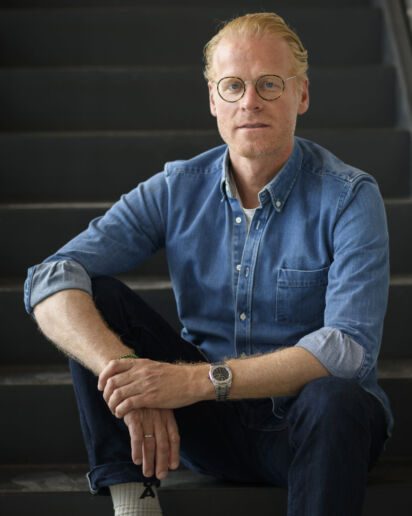
The fashion industry and the corresponding trade show landscape – especially in Germany – are currently in a phase of upheaval. As the organiser of MUNICH FABRIC START, how do you see your role in this context?
Sebastian Klinder: As a platform for high-quality fabrics and materials, MUNICH FABRIC START plays a central role in the German fashion landscape. We want to create the ideal environment for business with a high-quality, comprehensive exhibitor portfolio and the right scheduling. Our aim is not to set trends, but to reflect the most relevant ones, thereby strengthening the entire value chain and driving the development of the industry. With our holistic ecosystem consisting of Fabrics, Additionals, Bluezone, Per4mance, ReSource, Design Studios, Keyhouse, Sustainable Innovations and The Source, we fulfil this aspiration at MUNICH FABRIC START. Through targeted coordination with the industry, we offer an ideal atmosphere in which future-oriented players can come together.
Frank Junker: MUNICH FABRIC START is a creative hub that gives designers space to bring their ideas to life. We see ourselves as trailblazers for creative and technological innovations and thus as a driving force for the further development of the fashion industry. In this context, the topic of sustainability, for example, is firmly anchored in the program of our events. In addition, we attach great importance to our range of trend forums and presentations in order to be able to offer our guests the most holistic, future-oriented program possible, which serves the need for orientation and inspiration in equal measure and, last but not least, brings the entire industry together for exchange, networking and get-togethers.
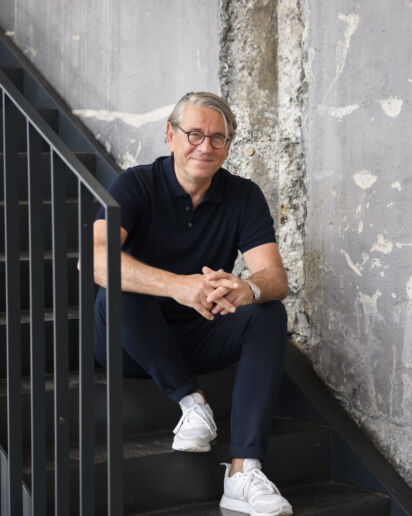
Discover more industry-changing innovations at our upcoming trade fairs:
ReSOURCE - Autumn.Winter 24/25
ReSOURCE is the sourcing platform for environmentally friendly and responsibly produced textiles, apparel and accessories. Search, discover and source – all in one place. Order sustainable materials online at any time on www.resource-textiles.com
With around 700 samples, the area for innovative fabrics and additionals that are bio-certified, bio-based, recycled, recyclable or from regenerative sources has once again grown significantly compared to previous seasons.
It’s the bio-based alternatives, eco-friendly finishes, recycled materials and innovative dyeing techniques using natural resources like coffee grounds that make the latest ingredients and accessories so forward-thinking. We’re featuring Spring.Summer 24 developments from some of our ReSOURCE exhibitors that you won’t want to miss:
REGENAGRI
regenagri is a regenerative agriculture initiative addressing the issues of soil health and the climate and biodiversity crisis. 100% regenagri CO.
- Categories: Organic/Natural
- Composition: 100% Cotton
- Certifications: ISO 14001, regenagri Content Standard, STANDARD 100 by Oeko-Tex®
- Applications: Active Wear, Cotton Fabrics, Jersey Fabrics
- Supplier: ÖZEN MENSUCAT
————————————————————————–
InResST
InResST® Recycled Nylon is made from ghost fishing nets.
- Categories: Recycled, Regenerated Celulosics
- Composition: 70% ECOVERO™, 30% InResST® Recycled Nylon
- Certifications: FSC, GRS, ISO 14001, STANDARD 100 by Oeko-Tex®
- Applications: Active Wear, Jacquard, Jersey Fabrics, Lenzing™ Technologies, Recycled Textiles, Regenerative Textiles
- Supplier: ÖZEN MENSUCAT
————————————————————————–
REFIT
REFIT is a high-end, eco-friendly, uncoated paper. It includes 40% post-consumer recycled waste topped up with 15% wool fibers. It is 100% recyclable and biodegradable.
- Categories: Recycled, Regenerated Celulosics
- Composition: 40% Paper, 40% rec Paper, 20% Cellulose
- Certifications: FSC
- Applications: Accessoires, Cellulose, Membrane, Labels, Labels, Recycled Textiles
- Supplier: TEXCART S.R.L.
————————————————————————–
DESSERTO
Desserto is a cactus- based biomaterial as an alternative to leather.
- Categories: Leather & Alternatives
- Composition: 65% Biobased content, 15% Cotton, 20% Polyester
- Certifications: STANDARD 100 by Oeko-Tex®
- Applications: Accessoires, Labels, Hangtags, Labels
- Supplier: Redmark
————————————————————————–
MONO MATARIAL HANG-TAGS
FSC rec paper hangtags + FSC mix paper strings, simplifying waste sorting.
- Categories: Recycled, Regenerated Celulosics
- Composition: 100% rec Paper, 100% Paper
- Certifications: FSC
- Applications: Labels, Hangtags
- Supplier: STUDIO 9 DENMARK A/S
————————————————————————–
ALGADYE
Algae-based dye is fully biodegradable and can be applied to various fabrics. Made from our patented, award-winning formulation, ALGADYE™ is best used for large-scale dyeing and surfaces, so you can make a large-scale sustainable impact. ALGADYE™ contains algae’s botanical properties that offer skincare benefits to those who wear it.
- Categories: Innovative Alternatives, Pollution free
- Composition: 87% Nylon, 13% Elastane
- Certifications: Bluesign
- Applications: Eco Finish
- Supplier: ALGAEING
————————————————————————–
FALMOUTH
100% Regenerative Cotton. Regenerative Cotton is a revolutionary method of cultivating cotton which seeks to upturn the environmental effects of industrial farming.
- Categories: Regenerated Celulosics
- Composition: 100% Cotton
- Certifications: regenagri Content Standard
- Applications: Cotton Fabrics, Regenerative Textiles
- Supplier: SÖKTAS TEKSTIL A.S
————————————————————————–
ALGADYE
Algae-based dye is fully biodegradable and can be applied to various fabrics. Made from our patented, award-winning formulation, ALGADYE™ is best used for large-scale dyeing and surfaces, so you can make a large-scale sustainable impact. ALGADYE™ contains algae’s botanical
- Categories: Innovative Alternatives, Pollution free
- Composition: 18% Elastane-Spandex, 72% rec Nylon
- Certifications: Bluesign
- Applications: Eco Finish
- Supplier: ALGAEING
————————————————————————–
NEXT SHOW
23/01 – 25/01/2024
HALL 2 | MOC Munich
The Fabric Trends Autumn.Winter 24/25 - Part VIII
In the FABRICS Area, around 600 international suppliers present their material innovations for all apparel segments. The complete product portfolio of fashionable woven and knitted fabrics made of wool, cotton, silk, blends and functional fibres is represented here. For the Autumn.Winter 24/25 season, we present some highlights from international producers in our FABRICS blogposts:
YÜNSA
Leading fashion trends with its innovative products developed with a focus on sustainability, Yünsa responds to increasing comfort expectations with highly elastic, functional fabrics, while offering a rich variety of colors and patterns that appeal to all ages and styles. Developed to meet the needs of different customers, Yünsa collections offer quality, elegance and comfort together with the latest fashion.
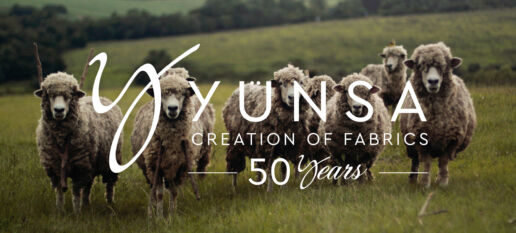

ZEYNAR
In Zeynar autumn.winter 24/25 collection the color focuses of the season are intense rust, apricot crush, matcha, and plum. The combination of plum with matcha is futuristic and calming. Aprico Crush stands for hope and raises positivity which is rounded off by a little autumn dust with intense rust. As environmental-friendly company, they focus on continuously developing sustainable fabrics in their entire collection.
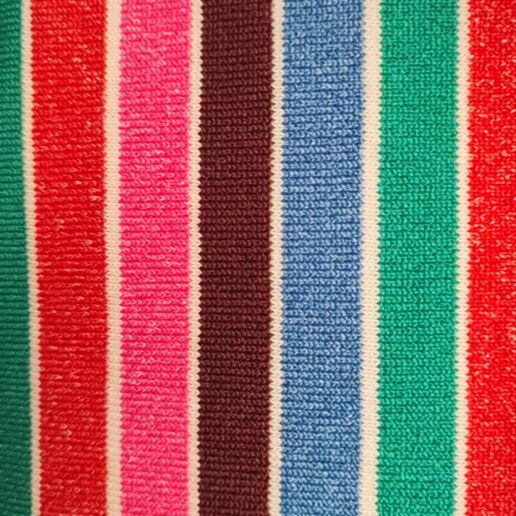
KARMA KOKTEYL KNITTINGS
Karma Kokteyl is a fabric manufacturer over 35 years of experience. Over these years, we continue to our production by following the latest innovations on the fashion and techonological developements. Our main vision is to give our customers fast and quality production according to their exact requests. In our compay, we are able to produce fabrics like; Single jersey, Double jersey, Jacquards, Ribs, Interlock, Elec. Jacquards,Pique. The key fibres used are; viscose, cotton, polyamide, polyester, linen and spandex with also of branded yarns like lycra, modal, tencel, lyocell, and organic cottons.As a company, it is our goal for the new season to continue working with sustainable fibers and their blends, as well as jacquard and interlock knitting.
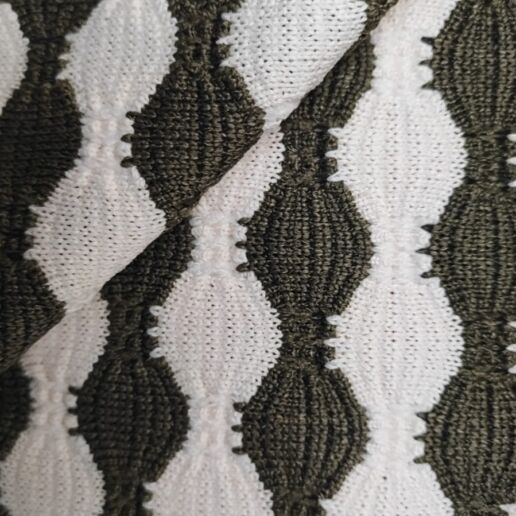
VICTOR TÊXTEIS
Victor Têxteis is a trademark of Pinto Nogueira Lda, a family company operating in the national textile sector, certified by Standard 100 by OEKO-TEX® and GRS-Global Recycled Standard®. They have over 29 years of experience and are based in Vila Nova de Gaia, Portugal. Their core business is production and supply of sustainable textile solutions, mostly produced in Portugal, in order to create articles such as swimwear and sportswear (Mesh, Polyamide, Polyester). They have a great concern with sustainability, and they have a selection of high quality environmentally friendly fabrics.

THIS MIGHT ALSO BE INTERESTING FOR YOU:
KEYHOUSE 2024 trends spring.summer25
20. January 2024
Auf über 1.000 Quadrat-metern finden Sie richtungsweisende Smart Textiles, Future Fabrics und neue Technologien – sei es in Punkto Nachhaltigkeit, Kreislaufwirtschaft, Digitalisierung, Traceability, Technologie oder Finishing für die Saison Autumn.Winter 24/25.
TIMELY TIMELESS
18. January 2024
Langlebigkeit steht hoch im Kurs. Und damit ist nicht nur eine solidere Qualität gemeint, sondern auch und vor allem ein zeitloseres Design.
Digitale Klarheit im Design – ASSYST
16. January 2024
Für das Thema Nachhaltigkeit sind normalerweise Einkauf und Produktion zuständig. Wer aber über den Einsatz von abbaubaren Stoffen hinausdenkt, kann Kosten, Materialverbrauch und Profitabilität deutlich beeinflussen. Neu daran: Der Schlüssel dazu liegt in der Hand der Kreativen.
ORTA x Long John
13. January 2024
Togetherthey developed the biggest sustainable jeans everproduced to set a new milestone within the denim industry.
GANNI – Fashion made from next-gen materials
9. January 2024
With all our communication we try to speak to our community in a meaningful and honest, not perfect way, showing the hard stuff, the stuff we didn’t get right, as much as we show the stuff we nailed.
STELLA BLU PRESENTS ITS FIRST COOLTRANS DENIM COLLECTION MADE WITHOUT INDIGO
4. January 2024
This technology opens up extremely exciting possibilities.
CLARITY In conversation with the organisers of MUNICH FABRIC START about the industry, the trade show calendar and new dates
2. January 2024
CLARITY » the pursuit of structure and unambiguousness on both a large and small scale «
ReSOURCE – Autumn.Winter 24/25
24. October 2023
Certifications, recycled materials, environmentally friendly - that's what the sustainable fabrics from the ReSource range stand for.
The Fabric Trends Autumn.Winter 24/25 – Part VIII
19. October 2023
The combination of plum and matcha is futuristic and calming. Apricot Crush gives hope and awakens positivity, rounded off with a hint of intensely rusty autumn dust.
BLUEZONE CONEXXION Autumn.Winter 24/25 - Part IV
With around 90 international denim, street & sportswear suppliers, BLUEZONE once again offered the complete portfolio of denim innovations in its own halls 6 + 7. Under the leitmotif DISCOVERY, the denim community shared moments, discovered the latest highlights and innovations. We present some material innovations, new perspectives and changes in the industry here:

ORTA
ORTANOW collection embodies ORTA’s 70 years of rich denim history with an innovation leading eco–modern handprint. The collection speaks of ORTA icons: from marble ring early nineties Japanese influence to Homespun ultimate X-Hatch of the 00s, from our first generation of multi-count fabrics to evolved techno shine flex to the Alchemy finish for cashmere touch, and the denim disruption of 100% bi-stretch with ORTA legends like 5616, Calgary, Taos and many more.
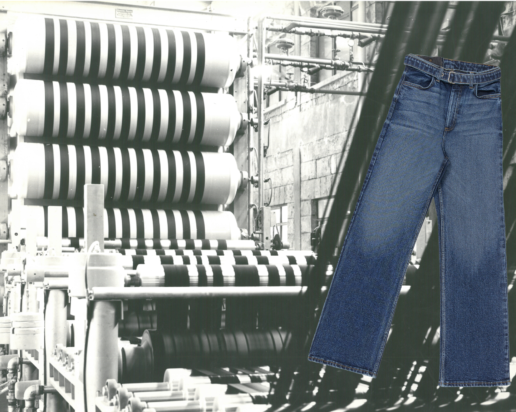
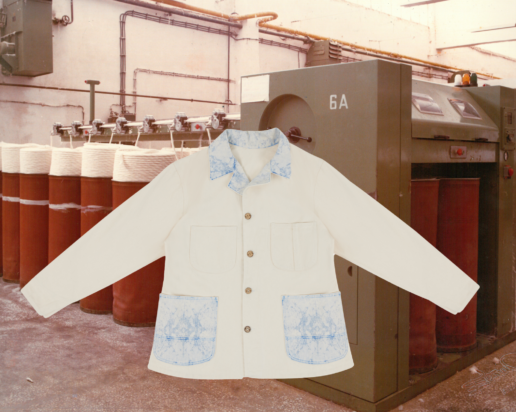
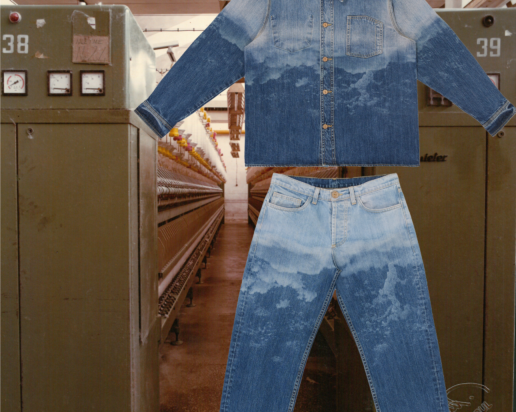
————————————————————————–
REALTEKS
REALTEKS started on its adventure in 1997 with a dream in the pocket. In 2022, REALTEKS owned a denim mill to do more for the carbon print on its 25th anniversary called “RE-BORN”. Their SEASONLESS Collection is all about Futurity Antique, The Essential Feature, Rigid Stretch, Simple Motion, Monochromatic, RE-Blue as concepts created in REALTEKS. In a world full of trends, they are not here to be average, they want to remain UNIQUE. They believe in NATURAL SOULS, they believe in DREAMS, they believe in REAL friendships, they believe in REAL LOVE. What is your super power?

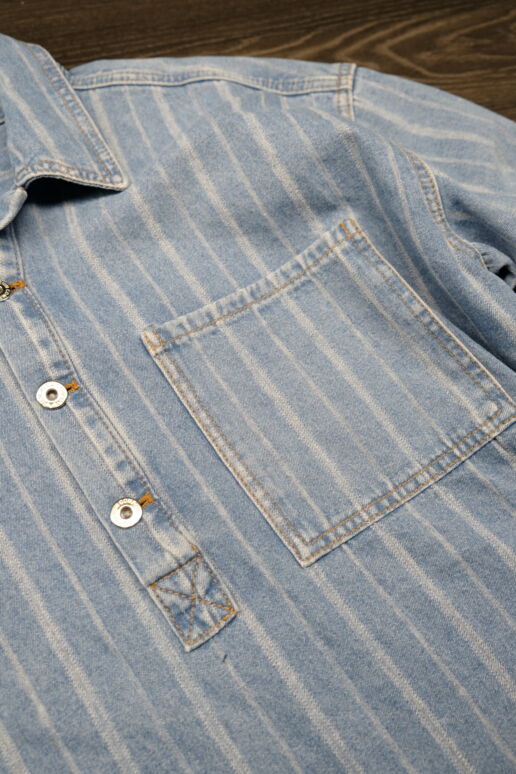
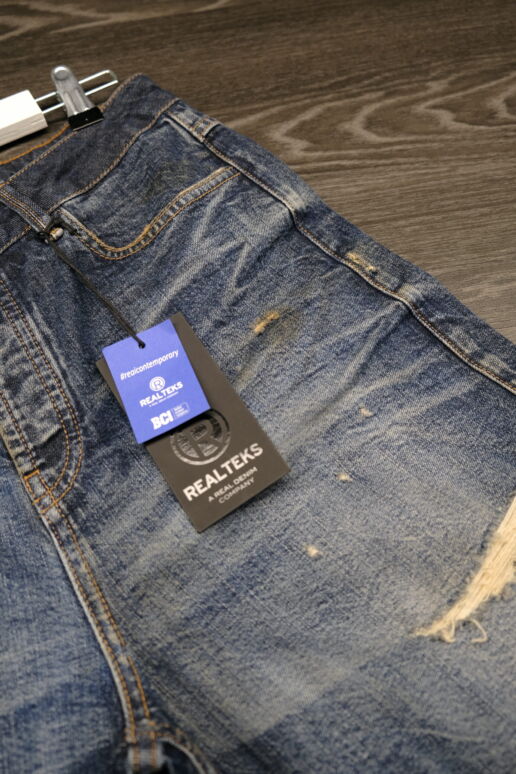
————————————————————————–
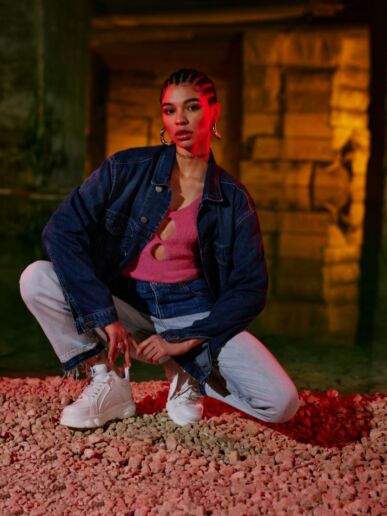
SHARABATI DENIM
Sharabati Denim presents three major concepts for this season: Blacklight is about the dark indigo colors, blacks, overdyes and coated fabrics. Their overdye technique gives the fabric a range of colors on both sides for extra versatility. Indigo coating lends denim deep dark hues and creates a denim look when applied to gaberdine. Kaleidoscope is about the millennium time looks. Hi-tech and retro at the same time. More colorful, cheerful with heavy washes. 50/50 rewrites the dress code rules with hybrid working. Find comfortable and smart-looking fabrics suitable for work time.
————————————————————————–
TEJIDOS ROYO
Pioneers in the development of the most sustainable ZERO WATER dyeing technology in denim… now for piece dyeing! They dye fabrics without using water, achieving excellent fastness. This is how ROYO POLICROM was born, the magic of transformation. An endless number of colour possibilities, with very trendy finishes such as the most authentic leather effect, the futuristic metallic finish or the denim color, among others. In DENIM they highlight ICON – fabrics made from 100% recycled components and sustainable practices. ICON is recycled and recyclable, therefore, ETERNAL. Its colour is DRY INDIGO and DRY BLACK = ZERO WATER. Undoubtedly, it is the future of denim.
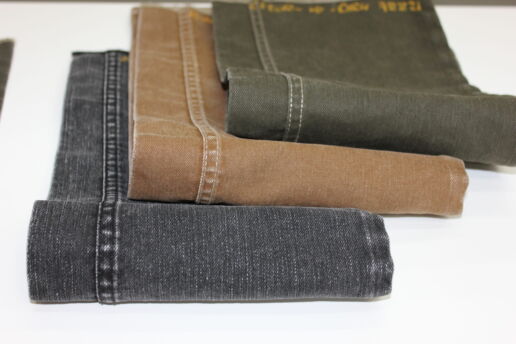
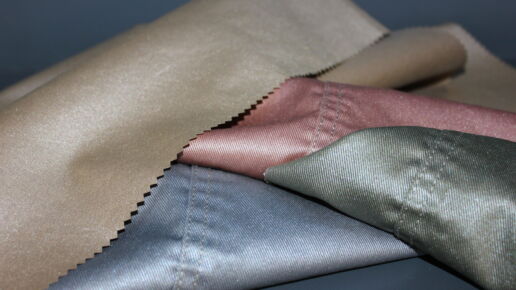
————————————————————————–
IMPRESSIONS OF THE BLUEZONE CONEXXION
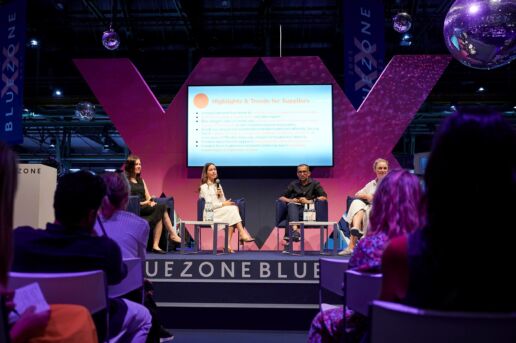
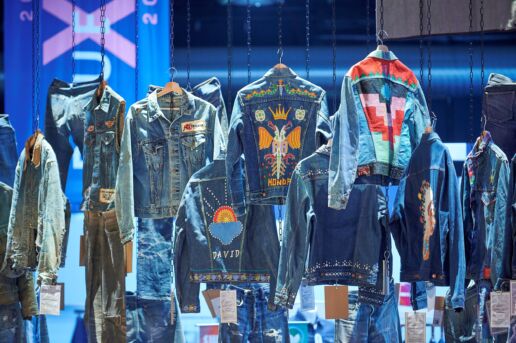
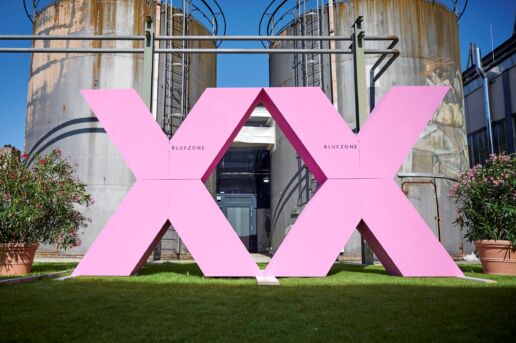
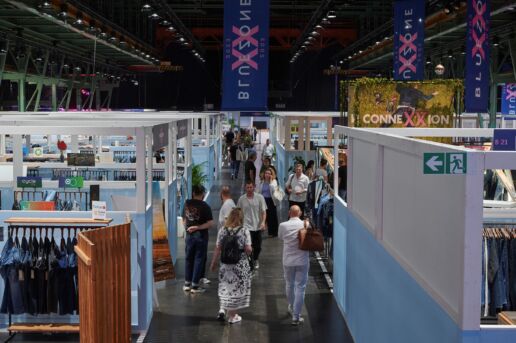
————————————————————————–
THIS MIGHT ALSO BE INTERESTING FOR YOU
KEYHOUSE 2024 trends spring.summer25
20. January 2024
Auf über 1.000 Quadrat-metern finden Sie richtungsweisende Smart Textiles, Future Fabrics und neue Technologien – sei es in Punkto Nachhaltigkeit, Kreislaufwirtschaft, Digitalisierung, Traceability, Technologie oder Finishing für die Saison Autumn.Winter 24/25.
TIMELY TIMELESS
18. January 2024
Langlebigkeit steht hoch im Kurs. Und damit ist nicht nur eine solidere Qualität gemeint, sondern auch und vor allem ein zeitloseres Design.
Digitale Klarheit im Design – ASSYST
16. January 2024
Für das Thema Nachhaltigkeit sind normalerweise Einkauf und Produktion zuständig. Wer aber über den Einsatz von abbaubaren Stoffen hinausdenkt, kann Kosten, Materialverbrauch und Profitabilität deutlich beeinflussen. Neu daran: Der Schlüssel dazu liegt in der Hand der Kreativen.
ORTA x Long John
13. January 2024
Togetherthey developed the biggest sustainable jeans everproduced to set a new milestone within the denim industry.
GANNI – Fashion made from next-gen materials
9. January 2024
With all our communication we try to speak to our community in a meaningful and honest, not perfect way, showing the hard stuff, the stuff we didn’t get right, as much as we show the stuff we nailed.
STELLA BLU PRESENTS ITS FIRST COOLTRANS DENIM COLLECTION MADE WITHOUT INDIGO
4. January 2024
This technology opens up extremely exciting possibilities.
CLARITY In conversation with the organisers of MUNICH FABRIC START about the industry, the trade show calendar and new dates
2. January 2024
CLARITY » the pursuit of structure and unambiguousness on both a large and small scale «
ReSOURCE – Autumn.Winter 24/25
24. October 2023
Certifications, recycled materials, environmentally friendly - that's what the sustainable fabrics from the ReSource range stand for.
The Fabric Trends Autumn.Winter 24/25 – Part VIII
19. October 2023
The combination of plum and matcha is futuristic and calming. Apricot Crush gives hope and awakens positivity, rounded off with a hint of intensely rusty autumn dust.


